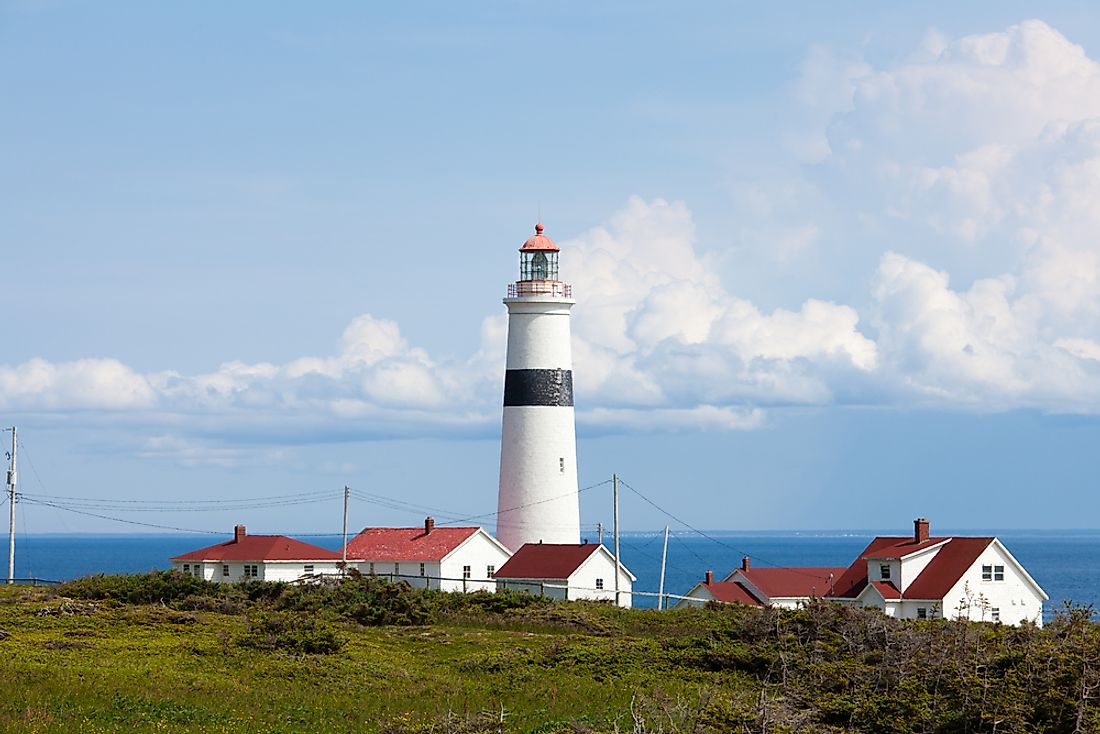Where Is The Strait of Belle Isle?

The Strait of Belle Isle is located on the northern entrance of the Atlantic Ocean on the eastern part of Canada.It separates the Island of Newfoundland from the Labrador Peninsula. The Newfoundland is on the eastern side of the strait while the Labrador Peninsula is on the western side. Strait of Belle Isle is Gulf of Saint Lawrence’s northern outlet. The two other outlets of the gulf are Strait of Canso and Cabot Strait. Strait of Belle Isle the shortest and straightforward route from Saint Lawrence Seaway and the Great Lakes ports to Europe. The name Belle Isle loosely translates to mean “Beautiful Island.” It was named after the Belle Isle situated at the extreme end of the strait.
Geography Of The Strait Of Belle Isle
The Strait of Belle Isle is about 125 kilometers long and has a minimum width of 15 km and a maximum of 60 km. The average width of the strait is approximately 18 kilometers. The depth of the strait varies across its length. At some points, rocks and deposits make the strait less deep. Around the coastlines, the strait is shallower as compared to when it progresses further into the strait.However, the average depth is around 110 meters.
The Strait of Belle Isle experiences cool summers and very cold winter. The average annual temperature of the strait is approximately 2.5°C. The mean temperature during the summer season is approximately 10°C. The winter temperature is around -5.5°C. The average annual precipitation in the strait varies between 900 mm and 1100 mm. During spring, the strait is usually blocked with dense ice while the Labrador Current carries the ice southwards.
Life In The Strait Of Belle Isle
There is quite a large number of flora and fauna in the Strait of Belle Isle. The most popular plant life in the strait is the algae. Numerous species of algae inhabit the waters at the strait with the most common species including the Sea Lettuce, crustose algae, coralline algae, and the green and brown filamentous algae. There are also several species of lichens that are spread out on the floor of the strait.The water is also rich in several species of fish with starfish as the most popular species in the strait. Besides, there are different species of echinoderms, mollusks, and crabs in the strait. The strait is also a route and a habitat for a number of migratory birds.
Navigating The Strait
Navigating the Strait of Belle Isle is very challenging and dangerous. The strong tidal currents and the cold Labrador Current has led to a number of deaths along the strait. There is usually ice in the strait between 8 to 10 months a year. The ice cover period is stimulated by the cold Labrador currents.The ice makes it even more difficult to navigate. Furthermore, there are variable weather conditions accompanied by fog and gales at the strait. In fact, it is usually fogy most times of the year. The fogs affect the visibility of approaching vessels. The shipping activities is mostly limited between June and November.











